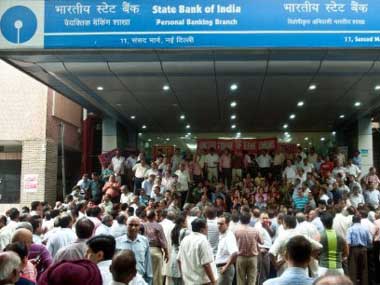What is mentioned in annual reports is just as important as what is not, especially in the case of banks. In a report on the banking sector entitled ‘Forensic Accounting Scores’, Ambit Capital has ranked Indian banks based on their on-and off-balance sheet risks and the extent of discretion they exercise on their balance sheet.
Among the various banks, new private-sector banks like Axis Bank and Yes Bank look the weakest, while Bank of Baroda is the least risky; old private-sector banks, meanwhile, appear to be running well-balanced operations. These trends are visible in the quarterly results of the banks announced recently. These results can, at best, be described as mixed.
State Bank of India (SBI) continued to surprise the market on the downside with its results. The largest bank in the country reported a net profit of Rs 1,583 crore, more than 20 percent below consensus estimates. A rise in lending rates helped the bank post a stronger net interest margin (NIM) of 3.62 percent. NIM measures the difference between the interest income generated by banks and the amount of interest paid to lenders.
[caption id=“attachment_62581” align=“alignleft” width=“380” caption=“SBI shares have fallen by 22 percent over the last one year and currently trade at a near one-year low.Manan Vatsyayana/AFP”]
 [/caption]
[/caption]
SBI’s stock had taken a beating after it made a huge provision in the quarter ending March 2011. The shares have fallen by 22 percent over the last one year and currently trade at a near one-year low. While analysts feel that the worst is over as far as bad debt provisioning is concerned, higher costs due to pensions and low growth in advances are issues of concern. SBI is among the slower growing institutions in the bank indices. Though its NIM is above average, its net NPA (non performing assets or bad loans) is among the highest at 1.6 percent.
State Bank of India has a mediocre performance in all categories but manages a respectable rank (32nd among 37 banks when 37th is the best rank as per Ambit) due to consistency across sectors. However, the bank fares terribly in case of exposure to stressed sectors. Its non-funded exposure to stressed sectors, such as power and telecom, is almost equal to its net worth.
Impact Shorts
More ShortsLooking at the other major banks for this quarter, Bank of Baroda seems to emerge as a clear winner, with net interest margins at a healthy 3.4 percent, and non-performing assets (bad loans) well below the benchmark level of 1 percent. But its valuations are expensive given its own historical averages. While Axis Bank has a comfortable percentage of bad loans and a healthy CASA ratio (current and savings account deposits as a part of total deposits: higher the CASA, lower is the cost for the bank), there is some concern over a declining loan book.
ICICI Bank has an uncomfortably high level of bad loans, at more than 1 percent, though most of it is because of legacy issues. However, the markets have awarded the stock high valuations, despite the fact that it has not giving any return over the last one year, possibly because of its strong institutional holding of 63.75 percent.
While public-sector banks have corrected in terms of valuations substantially over the last few months, they are closer to their historical averages. Consensus earnings outlook is already down 15 percent. If interest rates peak in the near future, the risk of deteriorating loanswill also be reduced.
However, Morgan Stanley said that if credit growth is tepid, margins and valuations will remain under pressure. In such a situation, it expects private banks to perform much better than public banks. Private banks are estimated to see revenue growth of 17 percent, while public banks will see growth of 9 percent, according to the investment bank.
Ambit Capital has evaluated Indian banks on the basis of their balance sheets, off-balance sheet risks and the discretion they exercise while making profit and loss provisions. With the balance sheet risks, the private banks emerged clear winners based on volatility in bad loans, stressed assets and exposure to stressed sectors. Banks with higher exposure to sectors like textile, power and telecom are expected to face greater risks. While state-owned banks are equally divided into stressed and unstressed entities, private-sector banks are mostly stress-free.
Considering all these factors, IDBI Bank, Yes Bank, Axis Bank, Dena Bank, ING Vysya Bank and Andhra Bank are at the bottom of the heap for Ambit. At the other end of the spectrum are Central Bank, Bank of Baroda, Federal Bank, Kotak Mahindra Bank and HDFC Bank, which rank among the top 25 percent banks.
)